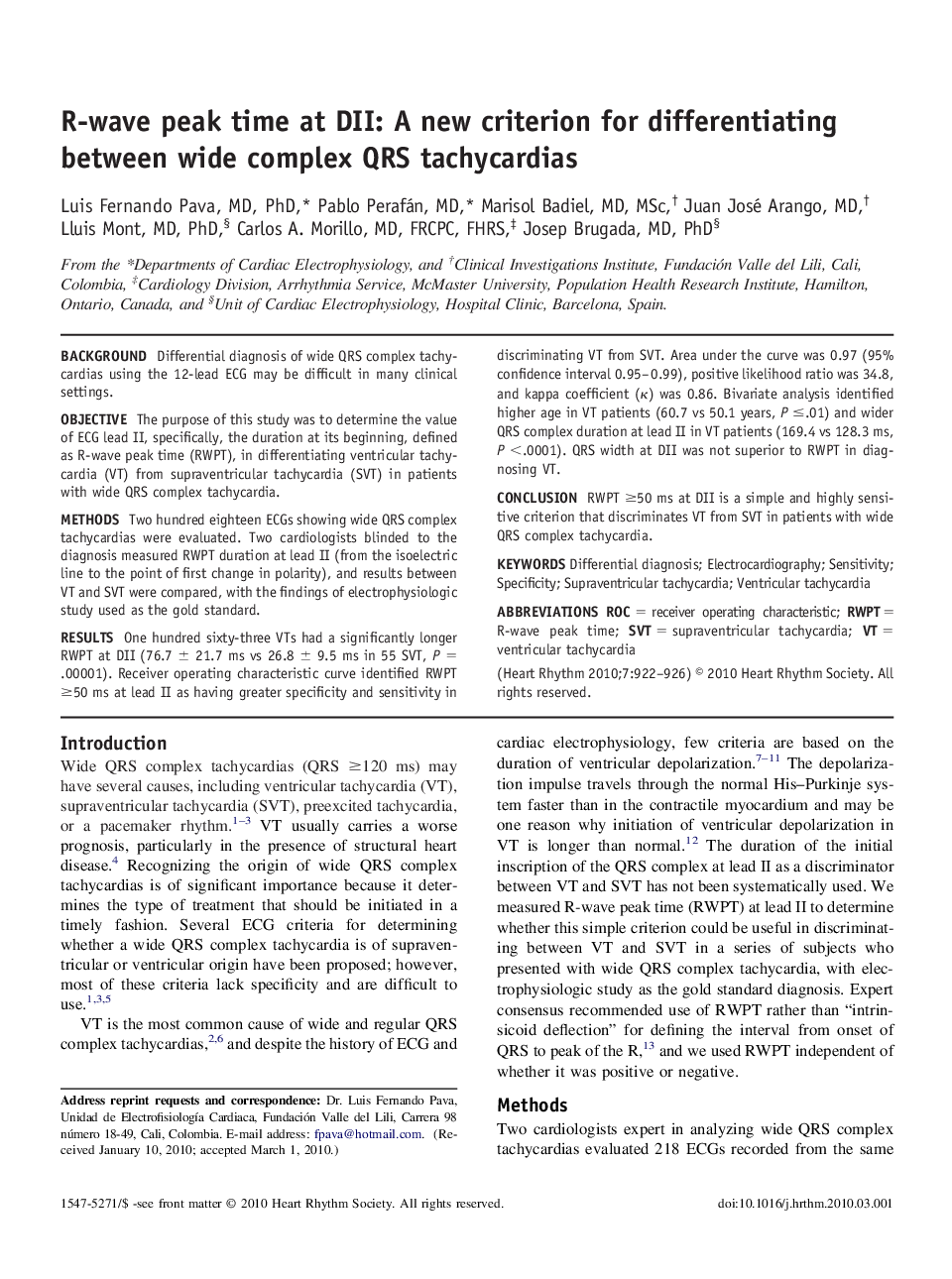| Article ID | Journal | Published Year | Pages | File Type |
|---|---|---|---|---|
| 2923305 | Heart Rhythm | 2010 | 5 Pages |
BackgroundDifferential diagnosis of wide QRS complex tachycardias using the 12-lead ECG may be difficult in many clinical settings.ObjectiveThe purpose of this study was to determine the value of ECG lead II, specifically, the duration at its beginning, defined as R-wave peak time (RWPT), in differentiating ventricular tachycardia (VT) from supraventricular tachycardia (SVT) in patients with wide QRS complex tachycardia.MethodsTwo hundred eighteen ECGs showing wide QRS complex tachycardias were evaluated. Two cardiologists blinded to the diagnosis measured RWPT duration at lead II (from the isoelectric line to the point of first change in polarity), and results between VT and SVT were compared, with the findings of electrophysiologic study used as the gold standard.ResultsOne hundred sixty-three VTs had a significantly longer RWPT at DII (76.7 ± 21.7 ms vs 26.8 ± 9.5 ms in 55 SVT, P = .00001). Receiver operating characteristic curve identified RWPT ≥50 ms at lead II as having greater specificity and sensitivity in discriminating VT from SVT. Area under the curve was 0.97 (95% confidence interval 0.95–0.99), positive likelihood ratio was 34.8, and kappa coefficient (κ) was 0.86. Bivariate analysis identified higher age in VT patients (60.7 vs 50.1 years, P ≤.01) and wider QRS complex duration at lead II in VT patients (169.4 vs 128.3 ms, P <.0001). QRS width at DII was not superior to RWPT in diagnosing VT.ConclusionRWPT ≥50 ms at DII is a simple and highly sensitive criterion that discriminates VT from SVT in patients with wide QRS complex tachycardia.
